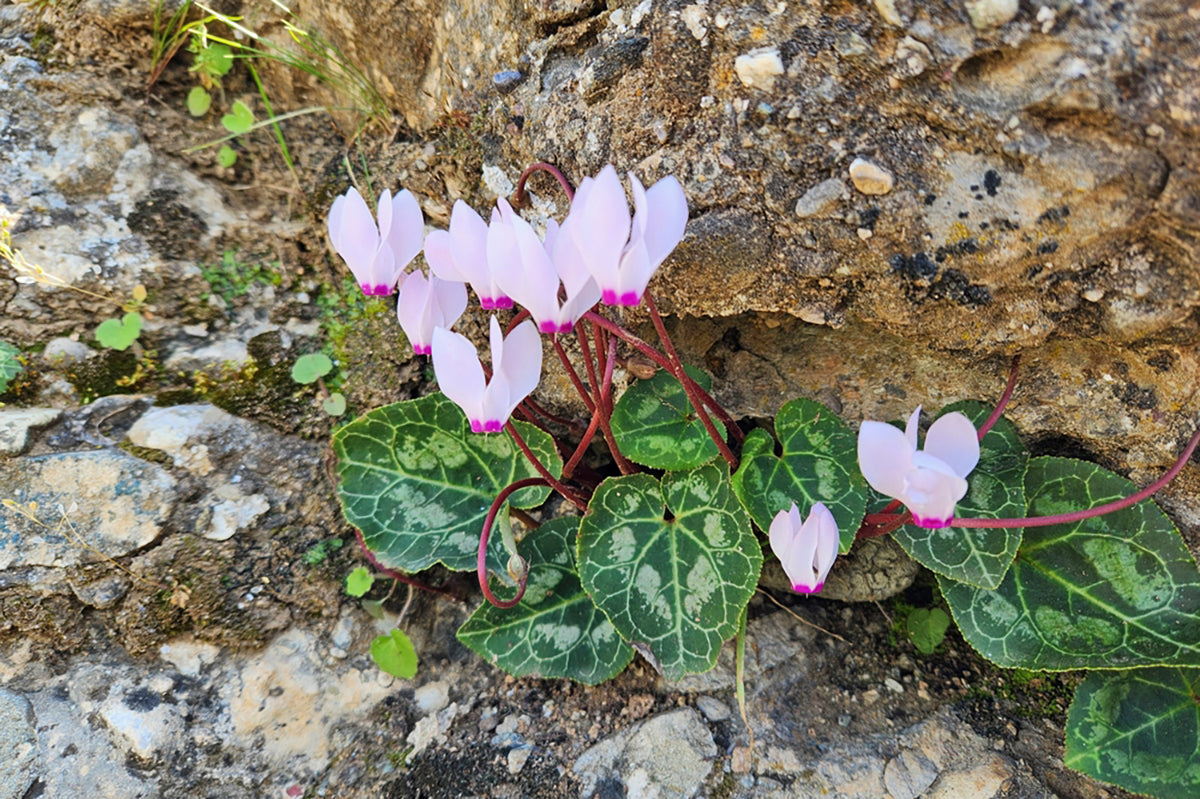Plant profile - cyclamen

A favourite houseplant in the winter months especially around Christmas, Cyclamen are also wonderful, long-lived garden plants. A native to Europe, the Mediterranean, and parts of Iran and Somalia, they are characterized by their colourful upturned petals and distinctive leaf patterns.
The name ‘Cyclamen’ comes from Medieval Latin and originates from the Ancient Greek ‘kyklos’, meaning circle, referring to the plant's round, dish-like tuber. In mainland Europe, these plants were commonly called ‘sowbread’ or ‘swinebread’, after it was noticed that they were a favourite food of foraging pigs. The plant grows from this tuber, its main storage organ, while the leaves grow from points on the tuber's surface and display wonderful variation in shape and pattern, from ivy-like to heart-shaped, in greens, and silvers.
Most Cyclamen species retain their Mediterranean growth pattern, becoming dormant in hot summers and active in cool, wet winters. Different species flower at various times throughout the year.
Interestingly the plant spreads through a close relationship with ants, which are drawn to the sticky coating on the brown seeds. After eating this coating, the ants scatter the seeds, helping the young plants move away from the parent plant, reducing competition and slowly expanding their range.
While florists commonly sell large-flowered cyclamen varieties, their hardy outdoor relatives are more understated. These smaller plants, usually growing to 10cm, adapt well to a wide range of garden conditions, and grow successfully in different settings. The tough plants perform well in partial to full shade, though they can also handle direct sun without much effect on flowering. They tolerate fairly dry soil, making them good choices for planting under mature trees.
A glance at the RHS Plant Finder shows a whole page of species and cultivars to choose from. Cyclamen hederifolium - the ivy leaf cyclamen - and Cyclamen coum, with its wonderful round or heart shaped leaves, are most commonly seen in gardens. Both come in a range of flower colours and have options on silvered or marbled leaf types. A number of other species worth investigating are Cyclamen intaminatum, C.mirabile, C. alpinum, and C. purpurascens. Perhaps more of a specialism these tend to be more suited to growing in pots and under cover due to their tenderness or specific requirements.







